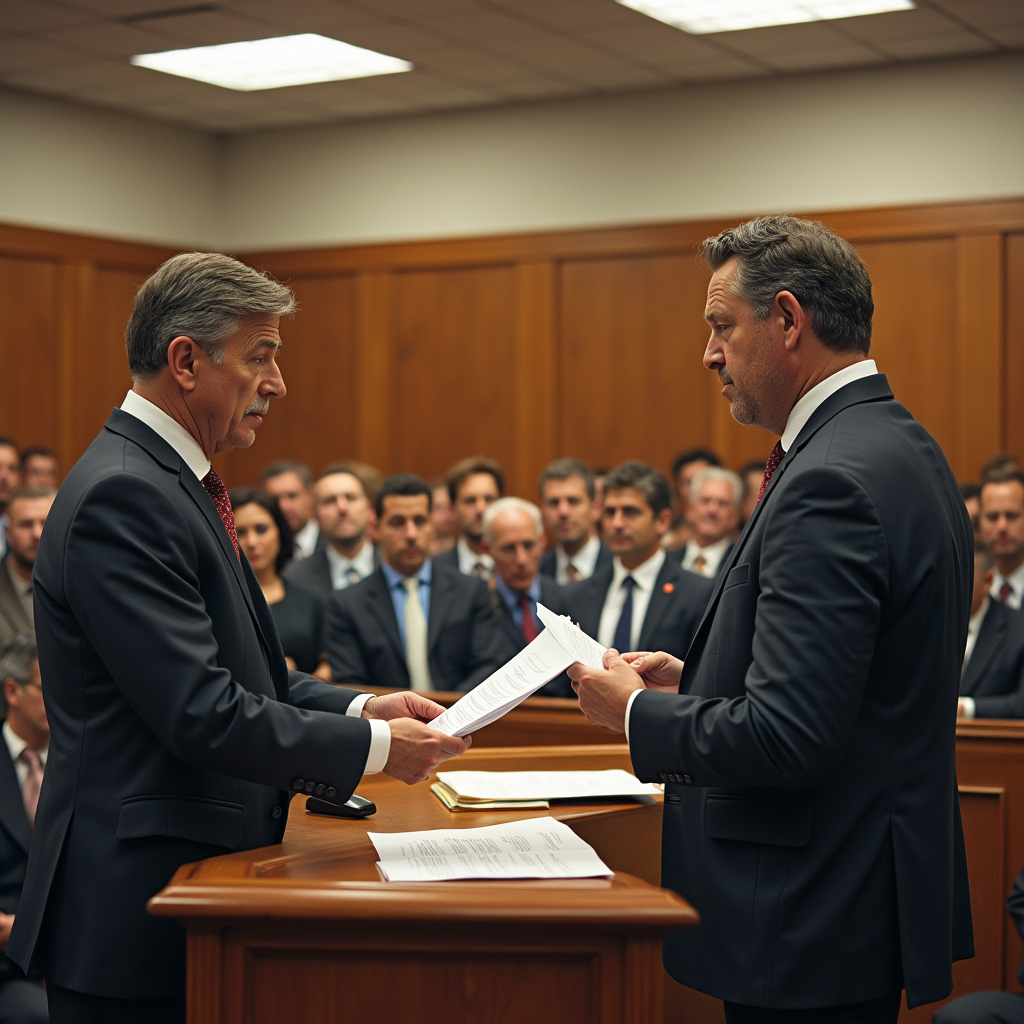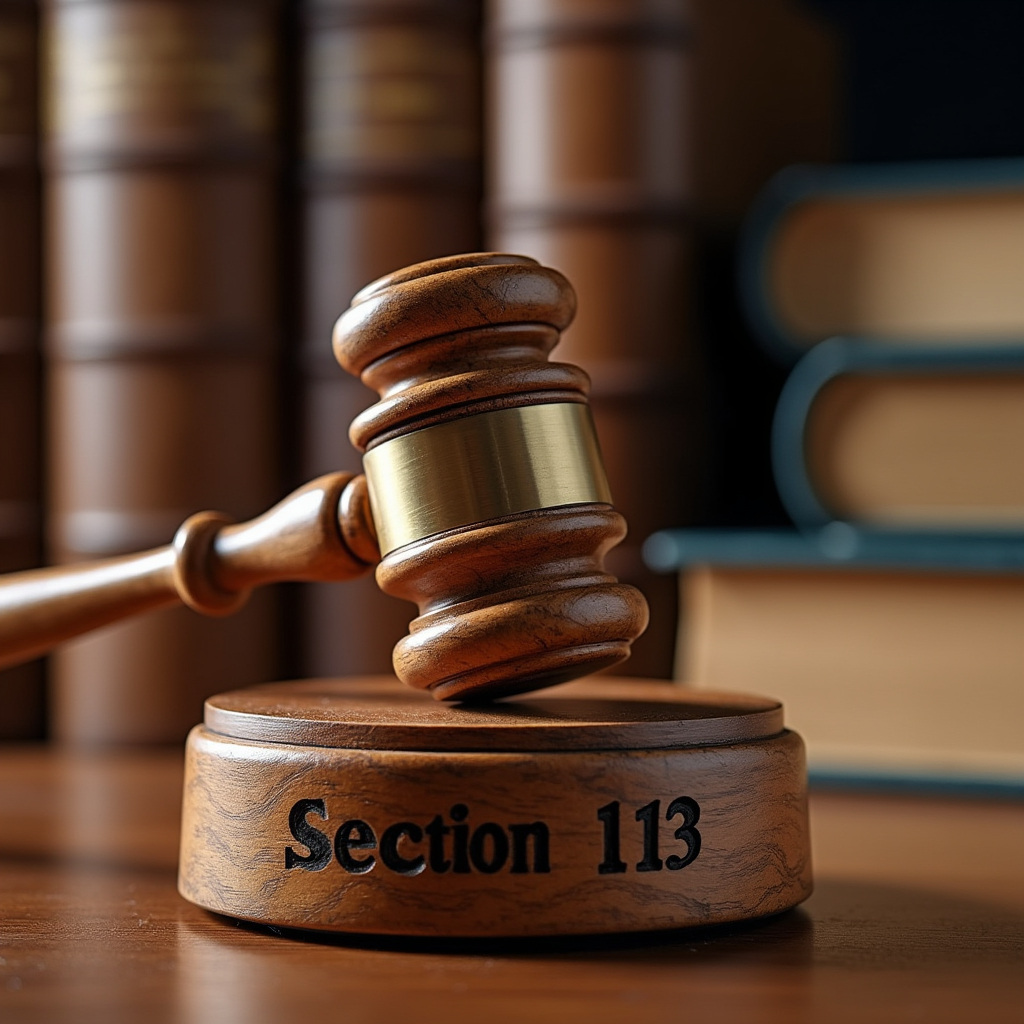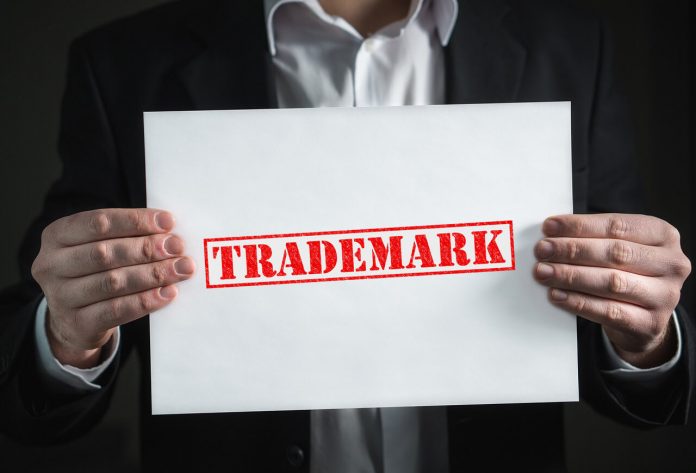This article has been written by Pragya Pathak. It aims to thoroughly explore the nuances of Section 113 of the Trade Marks Act, 1999. It focuses on the procedures to be followed when a person is accused of using false trademarks or trade descriptions, or selling goods containing such marks or descriptions, especially when these actions are repeated. The article also provides an analysis of the criminal offences under trademark law, the plea of invalidity of a registered trademark, the procedures enumerated under Section 113, and discusses landmark cases related to this Section.
Table of Contents
Introduction
Trademarks are a form of intellectual property governed in India by the Trade Marks Act, 1999 (hereinafter, the Act), which is a sui generis legislation. A sui generis legislation is one that is specifically tailored to meet the unique requirements of a particular legal regime. In the case of Intellectual Property Rights (IPR), many intellectual property are governed by such sui generis legislations that provide a special form of protection that takes care of the aspects related to such intellectual property. In this article, we are dealing with trademarks and how the relevant legislation tackles the plea of an unregistered trademark by a person accused of trademark infringement.
In India, Chapter 12 of the Act deals with offences, penalties, and procedures, incorporating several sections that prevent offences of copying trademarks, misusing trademarks on goods for sale, forfeiture of goods, offences committed by companies, and more. Under the same chapter, Section 113 of the Act talks about the procedure to be followed when an accused has been charged with certain offences, such as the application of false trademarks or trade descriptions (Section 103), selling goods or providing services that involve the application of false trademarks or trade descriptions (Section 104), and cases where the accused has been convicted more than once under Sections 103 and 104 of the Act (Section 105).
Let us understand Section 113 at length.
Section 113 of the Trade Marks Act, 1999
Under Section 113, the procedure enumerated relates to the pleading done by an accused when offences of Section 103, 104 and 105 are involved. Let us understand the essentials under this Section along with the procedure given under this Section in a step-by-step manner.
Plea of invalidity of registered mark by the accused under Section 113
When a person is charged as an accused in a trademark suit under Sections 103, 104, or 105 of the Act, the accused may plead that the trademark in question is, in fact, invalid. The procedure that needs to be followed in such a scenario is enumerated under Section 113 of the Act. If the validity of the mark is successfully questioned, there is a possibility that the proceeding may be stayed as per Section 124(1)(ii) of the Act. Section 124 of the Act states that in the case of a trademark infringement suit, if the accused pleads that the trademark in question is invalid or falls under Section 30(2)(e) of the Act, and there are no register rectification processes ongoing, then depending upon the maintainability of the plea, the matter may be adjourned for three months after raising an issue related to the rectification of the register.
Section 30(2)(e) refers to a scenario where there are multiple trademarks, registered under the Act, that are similar or identical to each other. In such cases, the register needs to be rectified. Such problems may persist from past evaluations of trademarks, as, in the present time, similar or identical marks are not allowed for registration. For instance, if there is a visual mark that is identical or similar to the logo ‘f’ of Facebook, it will be instantly rejected. Such a mark will clearly be rejected under Section 9 of the Act, which talks about the absolute grounds for refusal of registration of a trademark. This is because it belongs to the famous company ‘Meta,’ and the registered proprietor of this trademark is ‘Meta’. Specifically, Section 9(1)(a) and Section 9(2)(a) will come into action, as they relate to the lack of distinctive character of a trademark and deception, along with confusion to the public, respectively.
Procedure followed under Section 113 in case of invalidity of a plea

As discussed above, when the invalidity of the registration of any trademark is pleaded, there is a specific procedure that needs to be followed, as enumerated under Section 113 of the Act. This procedure can be broken down into three stages.
- Firstly, when such a plea is made, the court examines whether it is prima facie maintainable. If found to be so, the court sets aside the charge and adjourns the proceedings for a period of three months in order to provide the accused with an opportunity to file a plea before the Appellate Board for rectification of the register. The three-month period begins from the date the plea is made by the accused before the court, allowing time for filing the rectification application. In this manner, rectification of the register enables the accused to get rid of the incorrect trademark registered with the Trademark Office.
- Secondly, if the accused has filed the application for rectification of the register with regards to the trademark in question, they must prove the same before the court. This application must be submitted within the limited time provided, i.e., three months or as allowed by the court, considering the requirements of the case. Till the time the application is in process, the proceedings regarding the case will remain stayed.
- At the third stage, if the accused, after being given the time of three months or any additional time considered appropriate by the court, still fails to file the application of rectification before the Appellate Board, the court will not wait any longer and will continue the proceedings on the matter.
It is important to understand that, in the light of the current backlog in various courts in India, it is pertinent that the parties to any case act in accordance with the orders and with the required efficiency. Enough room has been provided under this section, procedurally, to let the accused defend his claim to the trademark in question. If the relaxations given by the court are not enough for the accused, then the courts are justified in proceeding with the case without any further delay. This provision provides ample opportunities for corrections to be made by the accused while adhering to the principles of natural justice.
Another example of this is Section 113(2) of the Act, which is quite lenient towards the accused. It states that in cases where an application for rectification of the register regarding the trademark’s validity has already been filed and is still in preponderance before the tribunal, the court will not continue the proceedings as done in normal circumstances. The proceedings will be stayed until the result of such an application is determined. Based on the acceptance or rejection of such an application for rectification by the tribunal, the concerned court will then decide on the charges against the accused. This sub-section reflects the inclusive approach adopted by the legislators as far as rectification of the register is concerned. Instead of assuming the accused person is guilty, the Act provides a more balanced approach where the decision regarding the charges is appropriately addressed in accordance with the application’s outcome.
Orders made at the interlocutory stage of the case
While decisions regarding the correctness of a plea for the invalidity of a trademark typically come at the end of the proceedings, there has been concern about whether courts can pass such orders at the interlocutory stage. It has been observed that it is indeed possible to pass important orders related to invalidity at the interlocutory stage, depending on the facts and circumstances of the cases. This has been clarified in the case of M/S Pornsricharoenpun Co Ltd & Anr vs M/S L’Oreal India Private Limited & Anr (2022), where the Hon’ble High Court of Delhi stated that this practice is common place where during the pendency of the interlocutory application for injunction, the court examines the validity of the registration of the plaintiff’s trademark and also holds the power to give a prima facie finding in relation to the same. It also examined that the Trial Court had been erroneous in not observing the same.
Requirement of trademark registration for the purpose of Section 113
Under Section 113, only those marks that are registered under the Act are included under the procedure mentioned therein. This means that the offences under Section 103, 104 and 105 may be committed in relation to any mark, registered or unregistered, but only those cases are covered under Section 113 that relate to the registered trademarks under the Act. In the light of this, it is important to also look at the dynamics around registration of trademarks, briefly.

The registration of trademarks is an action taken by the acclaimed proprietor of a trademark. It is a process that is undertaken in accordance with the law and the concerned legislation, as discussed below, and there is a process that needs to be followed, accordingly. After the process of registration, there are certain rights accorded to the person registering the trademark. Registration is usually for the protective measures against any infringement of trademarks but if a trademark is already a well-known trademark then there is knowability and reputation of the same (like Adidas, McDonalds, etc,.) and hence, they can be remedied under the passing off actions adequately.
When is a mark considered registered
Section 18 of the Act states that any person who wishes to become the proprietor of a trademark should get it registered by making an application to the Registrar. There is a prescribed manner of registration which is outlined in Chapter 3 of the Act. A mark is considered a registered trademark when it reaches the point of being registered by the Registrar under Section 18, and acquires all the rights that are legally vested in any registered trademark as per Section 28 of the Act.
Registration process of trademarks in India
The process of registration of a trademark in India begins with conducting a trademark search. After it is confirmed that the search results do not show any similar or identical mark already existing in the Register, the application is made under Section 18 of the Act. This section entails that a single application can be made for different classes of goods and services; however, the fee must be paid separately for each class. The applications are filed in the office of the Trademark Registry, where the principal place of business is situated. If there is no business being carried out in the territory of India, the statute provides that the place in India mentioned as the address for service will be considered when determining the territorially applicable office of the Registry. At this stage, when the application is made, the Registrar has the discretion to accept or reject the application so made.
Registered and unregistered trademarks
It is important to note that the protections offered by the provisions of the Act and the application of provisions like Section 113 are only for registered trademarks, i.e., marks that have been registered by the seller or owner under Section 18 of the Act. The Act provides more benefits of protection to registered trademarks; however, it cannot be said that unregistered trademarks are completely excluded from the Act. Under Sections 34 and 35, the Act provides statutory protection for marks that have not been registered. The rights of an owner of unregistered trademarks are protected by the declaration in the Act that such an owner is the prior user of the trademark and hence has priority or precedence over any forthcoming users of such trademark, even in situations where the forthcoming user’s mark is registered under the Act.
The action taken in the case of unregistered trademarks is referred to as passing off actions. These actions are in pursuance of common law and not on the trademark law, as provided under the Act. Although these sections do not offer the complete package of rights available to registered marks, they provide enough safeguards for a business to continue its practices without worrying about underlying threats like trademark infringement by any other person.
Offences for which procedure is laid down under Section 113
When a registered trademark is infringed (e.g., when a person copies a trademark or trade description that is already used by someone else to signify the origin and specific seller of such good), the actual owner of the trademark, who is aggrieved by such action, can take a recourse as per Section 52 of the Act. This Section empowers any registered user of a trademark to initiate proceedings in case of infringement of his or her trademark. Under Section 113 of the Act, Section 103, 104 and 105 have been referred in consequence of the plea of invalidity, which also constitute offences under the Act.
When we consider the relationship of Section 103, 104 and 105 with Section 113, we see that the offence mentioned under these Sections are dealt with according to the procedure mentioned under Section 113 when the same is in relation to a registered trademark and the concerned trademark is pleaded as invalid by an accused under Section 113. Section 103 deals with the penalty for application of false trademarks, trade descriptions etc. Section 104 deals with the sale of goods having false trademarks or trade descriptions attached to it. Lastly, Section 105 deals with the repetition of these offences more than once, which will lead to an enhanced penalty for the accused. These Sections have been discussed in Section 113 where these offences have been committed in relation to a registered trademark. Section 113 prescribes the procedure where Section 103, 104 or 105 involve a mark that is protected by registration under the Act. Some of the criminal offences for which penalties are prescribed under the Act are enumerated in Chapter 12 of the Act and are discussed as under–
Section 103 of the Act

Under Section 103 of the Act, penalties for the application of false trademarks and trade descriptions have been discussed. It elaborates on the actions that will make a person liable under this section and, eventually, subject to the penalty elaborated herein. There are seven actions that should be avoided to ensure that the penalty entailed in this Section is not attracted.
First, a registered trademark should not be falsified, meaning it should not be altered in any manner. Second, any registered trademark should not be used on any goods or services where there is no authority to do so. Third, a person should avoid possessing any die, block, machine, plate, or any other instrument that aids in the process of falsifying a registered trademark. Fourth, the use of any false trade description affixed to goods or services. Fifth, where there is a requirement of affixation of details such as the country, place, or name of the country or place of origin of any goods or their manufacturers, in accordance with Section 139 of the Act, the person must not affix wrong information. Sixth, where it is required under Section 139 of the Act to affix any indication of the origin of any goods, and any person tampers with, deforms, or effaces the same, applied to the goods. Lastly, seventh, any person aiding in the act of carrying out any of the above activities.
For clarity, Section 139 gives the central government the authority to release any notification mandating the affixation of information that indicates the origin of a good being traded, such as the country or place where it is manufactured or produced, or the name, address, etc., of the manufacturer or the person for whom these goods have been manufactured.
In this case, if a person can show that their action related to any of the above was devoid of malice and lacked any intention to defraud anyone, they may have a chance to be saved from the penalty. However, if this is not the case, such a person will be liable for a term of imprisonment that may be from six months to three years and a fine ranging from Rs. 50,000 to Rs. 2,00,000. If the judge perceives that the term of imprisonment or the amount of the fine should be less than what has been mandated in this section, it shall be mentioned in the judgement pronounced accordingly.
Section 104 of the Act
Under Section 104 of the Act, the penalty for situations where goods are sold or services are provided with a false trademark or a false trade description is discussed. A person is liable for a penalty under this Section if he or she sells, exposes for sale, or makes available for hire any goods that either bear a false trademark or trade description, or, where the goods are required to have an indication of sources as per Section 139 of the Act, and they do not have the same. If this penalty is to be avoided, the person must prove one of the three things mentioned in the section.
First, the person must show that when the act was committed, there was absolutely no reason to doubt that the trademark or trade description in place was false, and that he or she had taken all the reasonable precautions to ensure that such an offence did not take place. Second, the person must have provided all the information that was available about the person from whom the goods in question were sourced when demanded by a prosecutor. Third, the person must have acted innocently and without any mala fide intention.
The penalty under this Section is the same as that in Section 103, i.e., an imprisonment term between six months and three years and a fine between Rs. 50,000 and Rs. 2,00,000. It is upon the discretion of the presiding court to lessen the term of imprisonment or the payable fine, which must be mentioned in the judgement.
Section 105 of the Act
Section 105 of the Act discusses the penalty that may incur in the case of a second or subsequent conviction for any offence mentioned in Sections 103 and 104. If a conviction takes place, the penalty for imprisonment lies between one year and three years, and the fine will be between Rs. 1,00,000 and Rs. 2,00,000. It should be observed that with the second and every subsequent offence under the above sections, the lower limit of the imprisonment as well as the fine have been increased as an effort to deter the commission of such offences. Again, with special reasons that may find place in the judgement, the duration of imprisonment and the amount of the fine may be lessened where the judge deems fit.
Landmark judgements under Section 113

Vinod Kumar Proprietor of Kunal Trading Corporation vs. State (NCT of Delhi) and Others (2020)
In the case of Vinod Kumar, Proprietor of Kunal Trading Corporation vs. State (NCT of Delhi) and Others (2020), it was decided by the Hon’ble High Court of Delhi that the FIR lodged under Sections 103 and 104 of the Act could not be quashed. However, the court ruled that the plaintiff is free to raise an argument stating that a rectification application had already been filed by the petitioner before the appropriate tribunal for assessment of the trademark, in furtherance of Section 113(2) of the Act.
The court highlighted that there are very limited grounds on which an FIR can be quashed, such as mala fide allegations where no offence is evident. Also, as far as the proprietorship of the trademark is concerned, the Intellectual Property Promotion Board stayed the registration of the trademark in the favour of the plaintiff, hence the plaintiff was not the registered proprietor of the said trademark. Therefore, the suit was deemed not maintainable and was dismissed.

Bennet, Coleman And Company Limited vs. Vnow Technologies Private Limited & Anr. (2023)
In the case of Bennet, Coleman And Company Limited vs. Vnow Technologies Private Limited & Anr. (2023), the petitioner claimed that the use of the mark, ‘NOW’ has been a significant part of its company and it is a crucial part of the news channel, Times Now, that attracts a great deal of viewership within and outside India. It is a part of the various channels owned by the petitioner which include, Movies Now, Romedy Now, Magic Bricks Now, ET Now, etc. ‘Now’, being an essential and dominant feature of the mark owned by the petitioner, it was necessary that there is no confusion with regards to the usage carried out by the respondent.
The viewers of any channel are considered to be of average intelligence and imperfect recollection and such a viewer is going to find a connection between the services provided by the respondent and petitioners. This is because the services provided by the respondent are largely similar to that of the petitioner. In this situation, the viewers are going to be convinced that the respondent’s services are coming from the petitioner’s company, which is, in fact, not the case. Therefore, the petitioner sought rectification of the register for deletion of the mark from the impugned services.
The Hon’ble High Court of Delhi gave a decision favouring the petitioners, giving the reasoning that the mark that has been registered earlier will be the one that shall be considered as the early trademark. Since the petitioners have the earlier trademark, their petition has been allowed by the court and the respondent’s usage of the mark has been limited to the usage for which the petitioner’s mark is not registered under Class 38 of the Nice Classification such that there is no confusion with regards to the usage of the said mark.
Rachna Sagar Pvt. Ltd. vs. State of NCT of Delhi & Anr. (2023)
The case of Rachna Sagar Pvt. Ltd. vs. State of NCT of Delhi & Anr. (2023), the Hon’ble High Court of Delhi stayed the proceedings stating that the present case was in relation to the F.I.R. under Section 103 and Section 104 of the Act. It also highlighted that the procedure established under Section 113 is to be attracted since an application has already been made for the rectification of the register by the accused.
The court stayed the proceedings with the proposition that the outcome of the case will be dependent upon the result of the application for the rectification of the register as far as the registration of the mark is concerned. The complaint (28/12/2022) had been filed by the aggrieved after the application of the rectification (10/03/2022) by the petitioner in the present case. In this scenario, the court is bound to stay the decision as mandated under Section 113 of the Act.
Conclusion

The concept of trademark protection is centuries old, and so are pleas by individuals seeking justice for the trademarks owned by them. The procedure for challenging the validity of a registration is detailed in the Trade Marks Act, 1999, with the objective of ensuring that there is a system in place that can provide justice to those deserving. Section 113 not only outlines the procedure but also specifies how the court should conduct itself in such cases and what actions are expected from the accused. Considering the criminal offences under the Act and the decisions that discussed the way forward in cases involving Section 113, it can be understood that legislators have provided flexibility, giving room to the accused to present his or her case.
The legal framework around the provision allows ample time for the accused to file for the rectification of the Register of Trade Marks. It is also given that the courts can exercise their authority to extend the time for the application of rectification, wherever the situation demands and the courts deem fit. The fluidity of this provision continues the proceedings against the accused only in a scenario where he or she has failed to make the rectification application within the time period allowed by the court of law. Each case is a mixture of various case laws, legal provisions, legislation, and interpretations. Provisions like Section 113 allow a wide application of the rules while ensuring that the rights of an accused are not unduly hindered. This provision also offers the accused a fair chance to rectify their situation and defend themselves.
Frequently Asked Questions (FAQs)
What is the purpose of a trademark?
The purpose of a trademark is to protect the distinct and unique identity of a logo, mark, symbol, etc., related to a specific good, service, business, company, or entity. It facilitates the traceability of a trademark to its origin, ensuring that consumers know where the goods and services with the mark come from. This helps in maintaining the reputation and quality of the products or services.
What are registered and unregistered trademarks?
The Indian Trademark Act of 1999 provides for the registration of trademarks. A registered trademark enjoys all the recognition and protection provided by the Act throughout India. It allows the registered proprietor to file suits in courts to enforce their rights. Registered trademark in the capacity of a registered proprietor of the trademark. In contrast, an unregistered trademark does not have the same protection through the Act and is instead protected through common law remedies. Sections 34 and 35 of the Act deal with unregistered trademarks. These marks are protected only in areas where they have acquired some reputation, so their protection is limited to those areas.
What are ‘indications of source’?
On global platforms, such as WIPO, ‘indications of origin’ is used as a synonym for geographical indications. Indications of source are marks used on goods to communicate the geographical origin and the qualities of the products due to such origin. In the context of trademarks, an indication of source refers to the company, business, entity, or proprietor associated with the manufacture of goods or services. Trademarks help in ensuring that the goods or services have a known identity indicating their origin.
Is there any provision for an infringement suit for unregistered trademarks under the Trademarks Act, 1999?
No, the Act does not provide a provision for filing an infringement suit for unregistered trademarks. However, under Section 34 of the Act, unregistered trademark owners have the right of priority over a proprietor who registers the mark later. For example, if a person has used a mark since 1990 and another person registers the same mark in 2001, the rights of the person who used the mark from 1990 will be upheld. Section 35 of the Act also protects owners of unregistered marks, preventing proprietors of a registered trademark from interfering with the bona fide usage of their own name, business name, place of business, predecessors of business, etc., or the characteristics and quality of the goods and services provided by such business.
References
- https://atpsnet.org/wp-content/uploads/2017/05/technopolicy_brief_series_13.pdf
- https://medium.com/legis-sententia/graphical-representation-and-indian-trademark-law-bbaa610ef401
- https://especia.co.in/post/trademark-infringement-in-india/#:~:text=Criminal%20Cases%3A%20If%20someone%20continues,cause%20confusion%20with%20respect%20to
Students of Lawsikho courses regularly produce writing assignments and work on practical exercises as a part of their coursework and develop themselves in real-life practical skills.
LawSikho has created a telegram group for exchanging legal knowledge, referrals, and various opportunities. You can click on this link and join:
Follow us on Instagram and subscribe to our YouTube channel for more amazing legal content.
 Serato DJ Crack 2025Serato DJ PRO Crack
Serato DJ Crack 2025Serato DJ PRO Crack










 Allow notifications
Allow notifications



